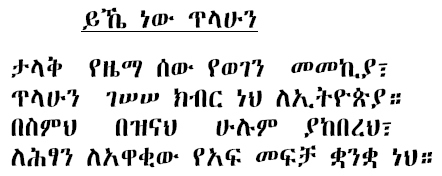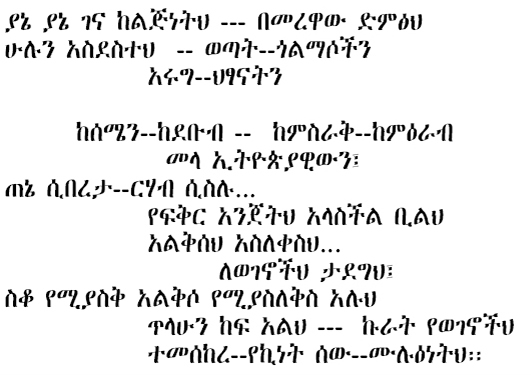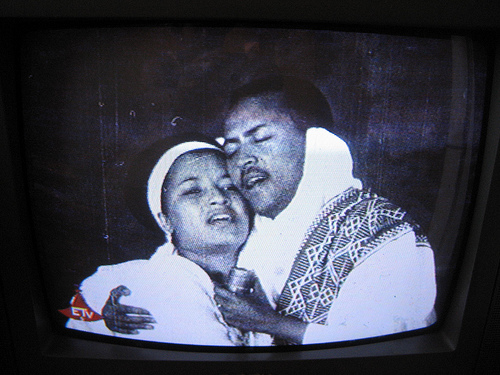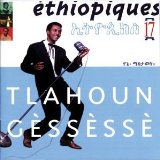Feyissa Abdela, 23, born in Shashemane, lives on one of the streets around Wello Sefer. He has been living on the streets for the last 15 years. He was part of the huge crowd that came out to witness Tilahun Gessess's funeral procession along the African Avenue (Bole Road), which was heading to Meskel Square where the main ceremony took place. It was surely a historic event.
Last Thursday, April 23, 2009, highlighted one of the major events to take place on Bole Road (Africa Avenue) and Meskel Square. People of all walks of life turned out to pay homage to the highly celebrated singer; Feyisa was just one of the hundreds of thousands in the crowd.
Despite the hardships he has had to face in life thus far, Feyisa still had room in his heart to come out to honour Tilahun; the T-shirt he wore said it all as it had "We Love You Gash (Respected) Tilahun" spread across both his chest and back.
"I have been a big fan of Tilahun from seven or eight years ago," said Feyissa.
Ironically, he does not have a player on which he could listen to Tilahun's music, or to the songs of any other singer for that matter.
"I enjoy going to one of the music shops around the town, where I beg them to play one of his songs so that I can dance," Feyissa told Fortune.
For him, Tilahun was a symbol of love that stretched across all social classes and barriers, encouraging people to love one another. He believes that last Thursday's funeral procession, and the ceremonies that preceded it, were just a humble gesture the Ethiopian society could give to a man who has touched so many lives.
"You can not imagine how I go crazy whenever I hear the song Ene Eskemot Diress (Till I Die)," Feyissa said.
There are some people from completely different strata of life who feel the same as Feyissa about the late Tilahun.
Brehanu Kidane, 58, was born in Dessie town and works in a recently established import/export company around Bole. As he expressed his sorrow, he said that he wanted to attend the funeral ceremony if his boss would allow him to.
Brehanu said that he first heard Tilahun's music in the early 6os.
"Back then, I was a Grade Three student," he said.
Tilahun used to stage music concerts with the Imperial Body Guard Band, popularly known by the Amharic name Kibur Zebegna, every 15 days.
This same band, along with the Police Orchestra Marsh Band, accompanied Tilahun's body through the entire procession, which began at his house just behind Bole Printing Press, went down Africa Avenue to Meskel Square, and then continued to the Holy Trinity Church Cathedral.
Tilahun's concerts back then, however, were only enjoyed by a limited number of people, who worked in government institutions, mainly officials, Brehanu explained.
"Not everyone was allowed to attend such concerts," Birhanu recalls.
Thus, every fortnight, on the day of Tilahun's concerts, Brehanu would reach the place they were being held early in the morning and wait for Tilahun.
"When I saw him coming, I would run to him, hold his hand, and beg him to take me into the concert," he told Fortune.
A devoted fan of the singer, Brehanu, however, is not that saddened by Tilahun's death as he believes that Tilahun had lived life to the fullest, and one can only celebrate the time he spent wisely on this earth rather than mourn his passing.
"Considering his age and the things he has done so far, I will never cry thinking over Tilahun's death," Birhanu declared.
Not only locals have been somewhat affected by Tilahun's life, foreigners too have felt his breeze. One such fan compared the magnitude of Tilahun's death to that of the global reggae star, Bob Marley, in terms of the honour the people have accorded him at his funeral.
"This is such an amazing situation that I am seeing today; just like the situation on May 11, 1981, the day Bob Marley died," Jingo Kasujja, 35, a dreadlocked musician and film maker, born in Kampala, Uganda, told Fortune as he headed towards Meskel Square.
People just need to be themselves in order to be loved like Tilahun, Jingo believes. For him, Tilahun was a singer and music is all he had to give, which he did wonderfully and this is what has drawn all those people to his funeral.
"I am not mourning his death; I am happy that he lived this long," said Jingo.
The Ugandan said he would have been crying if Tilahun had not already given all that he had to the world. He was referring to the more than half a century long singing career Tilahun has had, and the about 300 songs he has produced over the years.
The film maker first encountered Tilahun's songs through a CD prepared in the 1990s through Aster Awoke. He does not remember the song though, as he does not speak Amharic. Language has been no barrier, however, to his enjoyment of Tilahun's music.
"I get my Ethiopian friends to tell me about the meanings of the songs," Jingo told Fortune.
Solomon Beyene, 38, is the General Manager of Solomon Beyene Customs Clearing and Insurance Sales Agent; Fortune reporter caught up with him as he was buying three small pictures of Tilahun being sold at Meskel Square on Thursday.
"It is not that I do not have a picture of Tilahun in my home, but I do want to have everything about him that is in the market," he told Fortune. |









